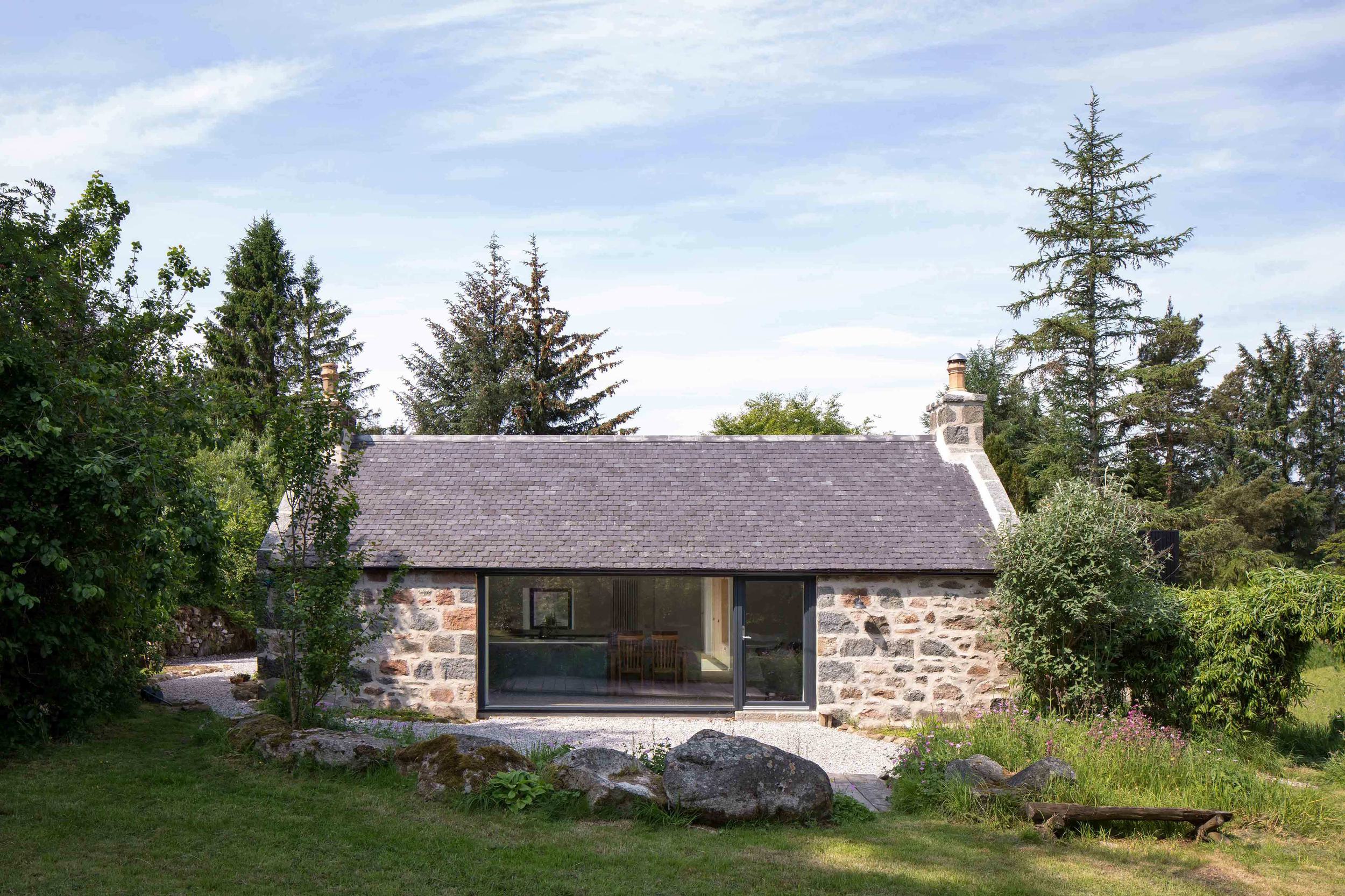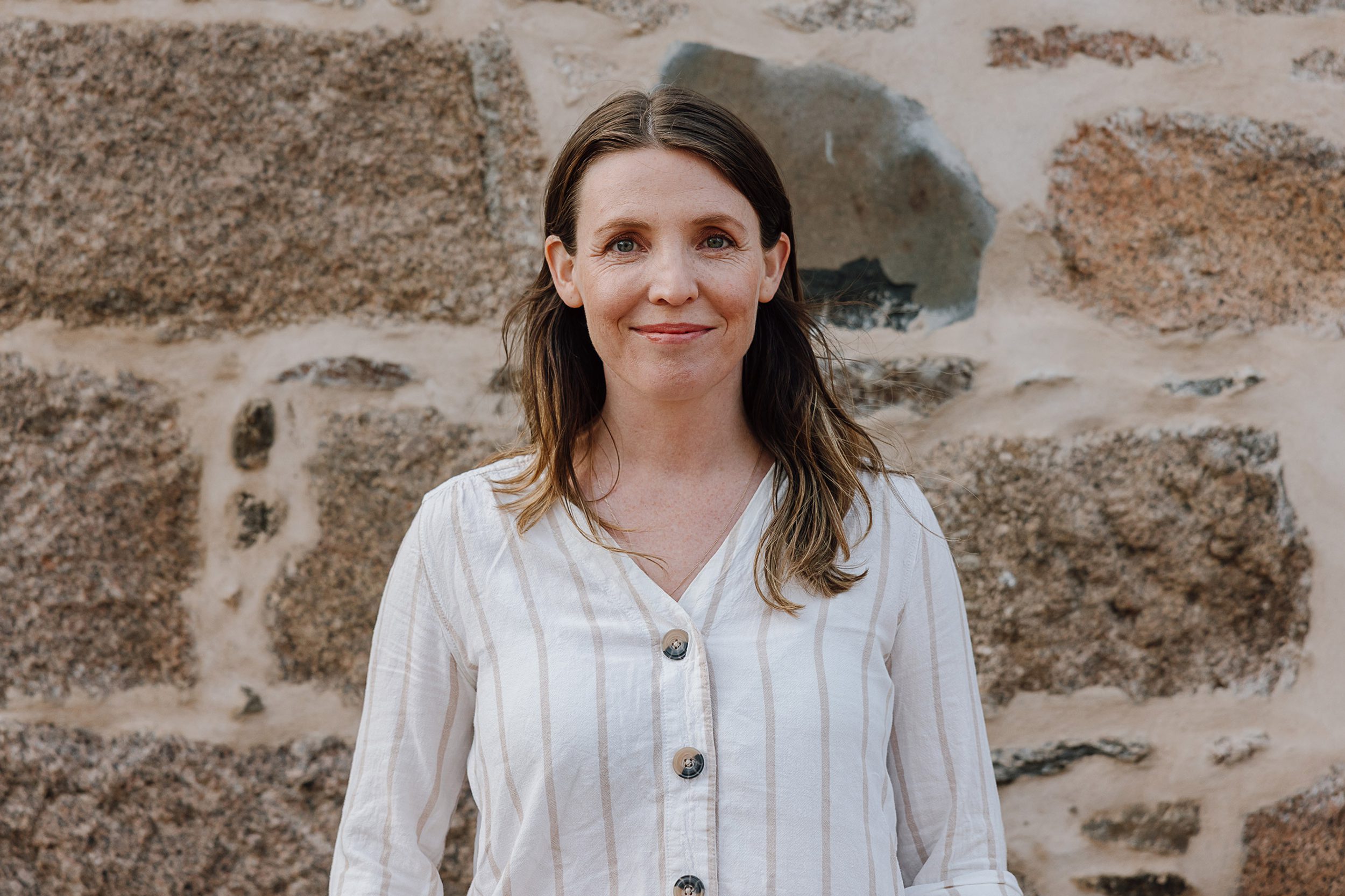
Cost of Renovating vs Building a New Home
Which project is the most cost effective? Which is the fastest to complete? We look at some of the key elements to help you decide whether to renovate or build from scratch. [5 Min Read Time]
Read
How much should you set aside to build a bespoke home in Scotland? Our cost guide includes real life examples, £/m² building prices and the factors affecting construction costs in 2025.
This is the number one question the Coldwells Build team are asked, and as you might guess, it’s not easy to give a simple answer.
The truth is, the average cost of an architect-designed custom home can be almost anything. We build family homes for a few hundred thousand pounds, to larger properties that are in the millions. There are so many variables that impact cost, that it’s impossible to create a blueprint which will apply to every project. Each one has different site conditions, construction methods, fixtures, fittings and materials.
So, the answer to 'how much does it cost to build a custom home?' really depends on your available budget. It's why we believe you should always discuss your budget with your builder early, to ensure your home is designed at a price that’s comfortable for you.
Our journal, How to Budget For Your House Build and Spot Hidden Costs provides helpful advice on this topic. In short, the first step is to determine how much you can comfortably and realistically spend on your custom home. To work this out, you need to consider the following:
Add these together and you’ll have your budget. From here, there will be two initial expenses:
The first expense is finding and buying the right plot of land. You can get an idea of land costs in your area with a bit of research and by speaking to local estate agents.
Concentrate on just a few areas where you would like to put down roots. The wider the radius you draw, the more work you'll have visiting sites, meeting landowners and making decisions. Our journal, 8 Ways to Find Plots for Sale in Scotland will help you focus your efforts. You'll also need to factor in legal fees and taxes.
If you’re building a bespoke home, you’ll also need to set aside part of your budget to cover the costs of hiring professionals such as an architect, site surveyor and structural engineer.
Once you know your professional and plot costs, subtract these from your overall budget and you’re left with your construction budget, which is the amount you can spend to build your bespoke home.
We would also advise leaving some cushion for unexpected costs during the building process. A contingency fund of 15-20% is a good idea.


The cost of building a bespoke, architect-designed home in Scotland in 2025 depends on many factors, from its size, construction type, the complexity of the design, the quality of materials and the ground conditions of your plot. We've highlighted some of the key factors below.
The quality of materials you finish your home with [the specification] will have the biggest impact on price.
When booking a hotel, we generally understand how the star rating correlates to the cost. It’s the same when you’re building a home. A standard-spec finish [3*] with off-the-shelf laminate flooring, basic MDF skirting boards and window sills, and standard lighting fixtures are budget friendly.
High-spec luxurious finishes [5*], such as solid wooden flooring, natural stone tiles, intricate, architectural features and custom-built cabinetry will add a unique look to your home, but also increase cost.
The construction method of your home will also influence cost. A simple timber frame home will be more economical [and faster to build] than a complex steel frame house.
High-performance triple-glazed windows or bi-fold doors will cost more. Standard UPVC windows are more affordable than aluminium or timber. Roof materials, such as slate, sheet metal or sedum, also differ in price, as do the choices for external cladding and finishes, whether it’s timber, glazing, metal, or stonework.
The location of your build will impact the overall project cost. Building on a remote Scottish island may require additional expenses for contractor accommodation and transporting materials by ferry. Building in a city can also drive up costs due to higher demand for labour.
The biggest cost uncertainties often lie beneath the surface of your plot. An extremely boggy or rocky building site will bump up costs. Boggy land could lead to drainage issues and may require deeper excavation and filling with imported hardcore. Larger rocks will need breaking up and any surplus removed from site.
A sloped site increases costs due to the extra digging, filling and levelling needed to ensure the foundation can be built on stable, even ground.
A site that needs a lengthy access road can significantly increase costs. A level access road over a short distance will be more budget-friendly.
If your chosen site isn’t already hooked up to water, electricity and telecoms/broadband, it will cost extra to extend existing connections or install new ones. In rural areas, you might need to invest in a private septic tank or treatment plant if you can't connect to a mains sewerage system.
External works such as garages, driveways, paths, landscaping or fencing all vary in price and will need to be considered in your budget.
If you’ve bought an existing building, will it need to be demolished before your new home can be built? If so, this will need to be factored into the cost, along with skip hire and removing waste from site. If asbestos is present, a specialist contractor will be required to remove this safely. Similarly, if you're building on land previously used for agriculture or industry, there may be contaminated soil, which needs to be removed and disposed of.
Size is a major factor to consider. Generally, the larger your floor plan, the greater the cost. However, a smaller, high-spec, steel frame house could cost more than a larger economically built home.
If you’re planning to build a home, you’ve undoubtedly heard people talk about a cost per square metre [£/m²] rate, with m² being the total internal floor area of a home.
It’s a back-of-the envelope way to work out a ballpark build price. However, it should be approached with extreme caution. The method oversimplifies the complexities involved in building a home and fails to account for the numerous variables that impact the final cost. Our journal, The Problem With Cost Per Square Metre Rates explains more. Unless you understand exactly what the square metre rate includes, it can be a deceptive source of cost information.
Below, we use square metre rates to illustrate the build cost of a bespoke, architect-designed 3-bedroom home. However, we’ve also clarified exactly what is included in that cost.
In 2025 Coldwells Build built a bespoke, architect-designed bungalow in rural Aberdeenshire. The house was built using a prefabricated timber frame kit with aluminium clad windows and external doors. Its exterior was finished with a smooth render and sheet metal roofing. The house was finished to a standard spec throughout and included:

The building site was sloped and extremely rocky, requiring this to be excavated and crushed to create a level foundation for the home. A 30 metre retaining wall, made from Gabion baskets was also necessary. These factors increased the overall cost of the project.
Dwelling size: 198m²
Construction cost = £580,000
Cost per m² = £2929
This cost was for a full turnkey package, covering all materials, fittings and finishes. It included a modern kitchen fully equipped with appliances, a wood-burning stove, sanitaryware for two large bathrooms, underfloor heating and an air-source heat pump.
It also included site preparation [excavating and crushing rock], a tarred driveway, a 20m² porcelain-tiled patio, an integral single-car garage, a 30-metre retaining wall, a 40-metre dry stone dyke and landscaping.
Our clients paid additional costs for professional services such as an architect, site surveyor and structural engineer.
As principal contractors, Coldwells Build took full responsibility for managing and coordinating the construction process, including the prefabrication of the timber frame kit. This ensured the project was completed on time and within budget. Our clients benefited from our strong network of trusted suppliers and skilled tradespeople.
For new builds, VAT is zero-rated, which means VAT registered builders or subcontractors must zero-rate their work and not charge VAT.
Although the builder and subcontractors will have to pay VAT when they purchase materials, they can claim that back but can’t pass it onto the client.
If you're doing a self build project, you will have to pay VAT at full rate for the purchase of any materials. However, this can be reclaimed at the end of the project under HMRC’s DIY Housebuilder’s Scheme.
The price of construction materials surged rapidly in 2021 and 2022, reaching a 40 year high. Although inflation has slowed, prices are still climbing—just not as quickly.
Ongoing challenges, such as the war in Ukraine, post-Brexit trade changes and the lingering effects of the pandemic have disrupted U.K. supply chains.
In addition to material costs, construction labour rates are also increasing, driven by a severe shortage of skilled workers in the U.K.
According to the Federation of Master Builders 41% of U.K. builders struggled to hire joiners in 2025, while 43% said the shortage of skilled tradespeople had caused job delays. This issue is expected to worsen in the coming years, exacerbated by reduced immigration and an ageing workforce
The Scottish Government has stated its ambition that all new homes in Scotland should be built to a "Scottish equivalent" of the Passivhaus standard in the coming years.
Passivhaus is a science-based, building standard renowned for delivering ultra-low-energy homes across the world. It reduces heating bills by 79%, compared to homes built to current Scottish regulations. It also lowers carbon emissions and improves the comfort and health of its occupants.
Passivhaus homes typically cost about 4-8% more than average homes due to the need for higher quality materials and specialist construction professionals. However, as the standard gains wider acceptance and Scotland’s supply chain for materials and components expands, costs are expected to decrease. Additionally, the upfront investment is offset over time, as Passivhaus homes have lower lifetime expenses.
With the tightening in Scotland's building standards, coupled with cost of materials and increasing labour rates, the cost to build is certainly not coming down.
Trying to time the market for lower prices is a false economy.
The sooner you can decide that building a home is right for you, the less you'll need to invest. Starting the process now allows your builder to lock in prices with suppliers and trades before costs go up again. Plus, you could be settling into your new home within 12 months.
Once you know your construction budget, it’s crucial your home is designed with that figure in mind.
It’s easy to get carried away with ambitious design concepts, but when the time comes to approach builders for quotes, you may discover the construction costs are beyond what you want to spend or can reasonably afford. After designing your dream home, this can be a devastating emotional, financial and timeline setback.
To avoid this, we recommend you work with an architect who has a track record of collaborating with builders in the design phase to provide cost visibility from the start.
This simple but fundamental difference saves money and time by transforming the relationship between builders and architects into an alliance which fosters not only creative collaboration, but most importantly, budget control.
The architect manages the creative design, and the builder and architect work together on costs. When construction costs are monitored and tracked in the design phase, the risk of budget blowouts decreases.
It’s also an opportunity to identify any construction related challenges early on. With practical input from the builder, potential issues can be ‘designed out’ before leaving the architect’s desk, saving time on rework at a later (and more costly) stage.
A well-considered project could potentially net you a profit when [or if] you come to sell in the short term, and of course much more over a longer period of time.
Coldwells Build manages a limited number of architect-designed, custom home projects each year, so our clients are guaranteed the highest level of quality. If you have a deadline in mind, start the discussion far in advance.
Take advantage of our willingness to share knowledge about the building process and schedule a strategy conversation today.

A trained communicator, Clare co-founded Coldwells Build with the aim of improving consumer experience within the construction process. Working previously as a television director and journalist, she understands more than most, about the power of detail, organisation and timing.

Which project is the most cost effective? Which is the fastest to complete? We look at some of the key elements to help you decide whether to renovate or build from scratch. [5 Min Read Time]
ReadWe’ve created 8 free-to-download guides packed with tips on budgeting, plot finding and self-building. Essential reading for anyone planning to build their home.

An introduction to the Passivhaus standard — what it is, how it works and the steps you can take to achieve it in your new home.
Download